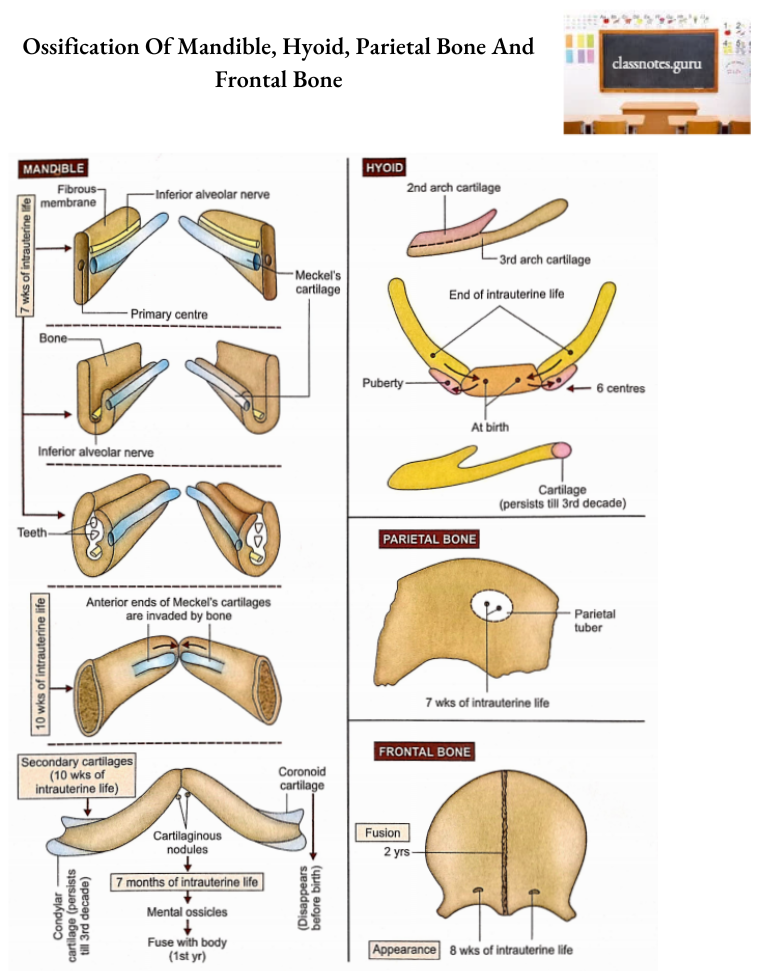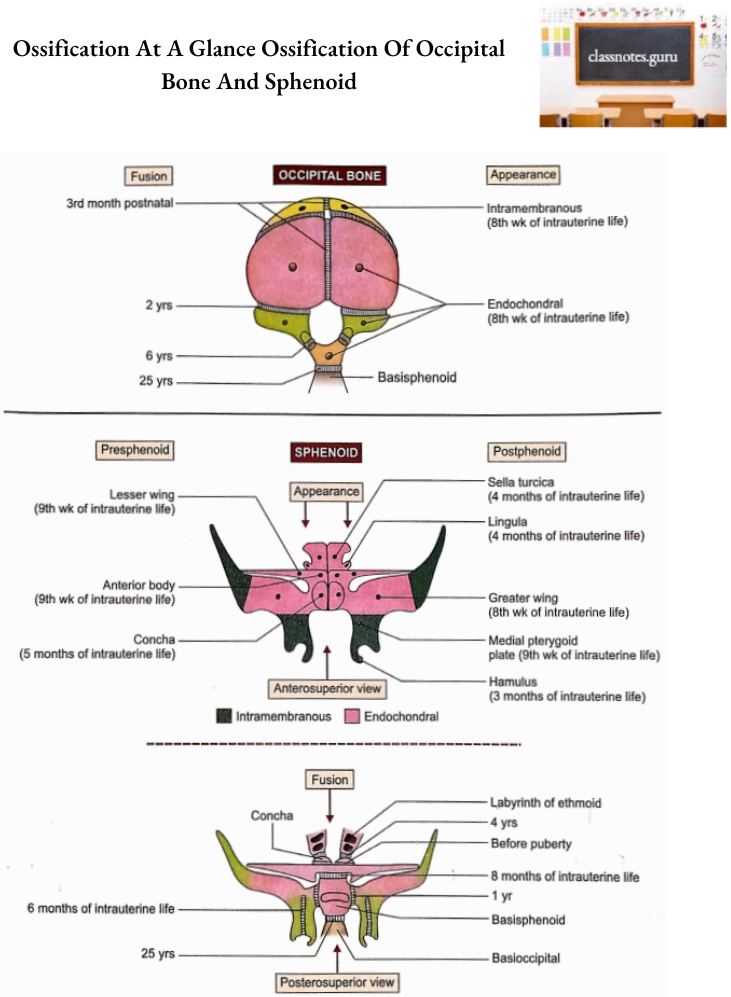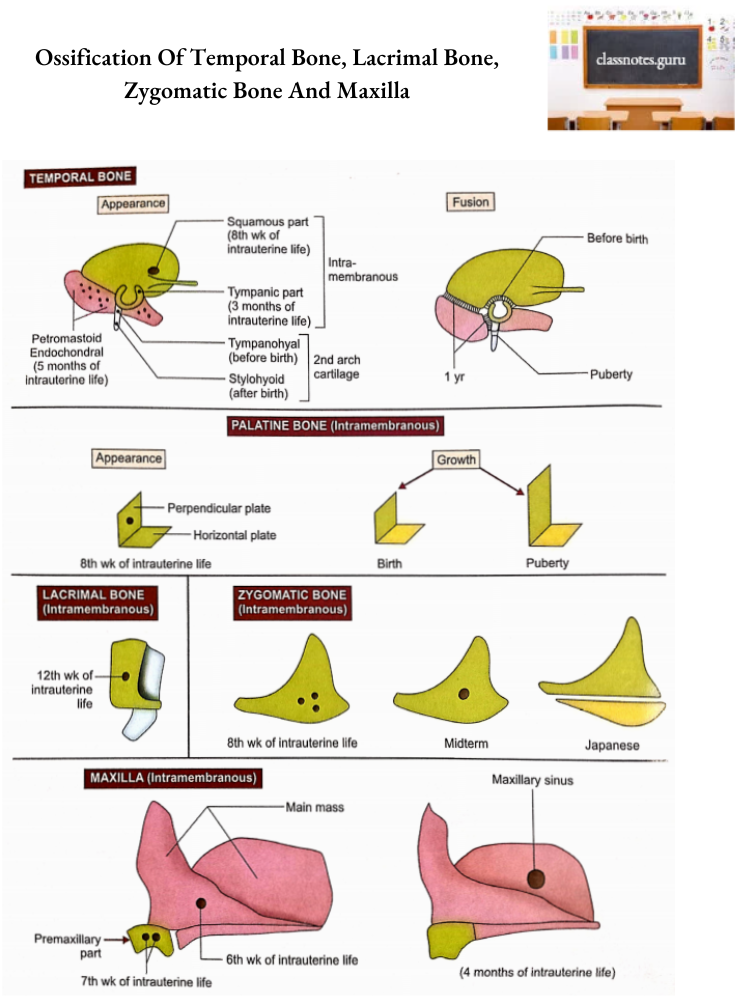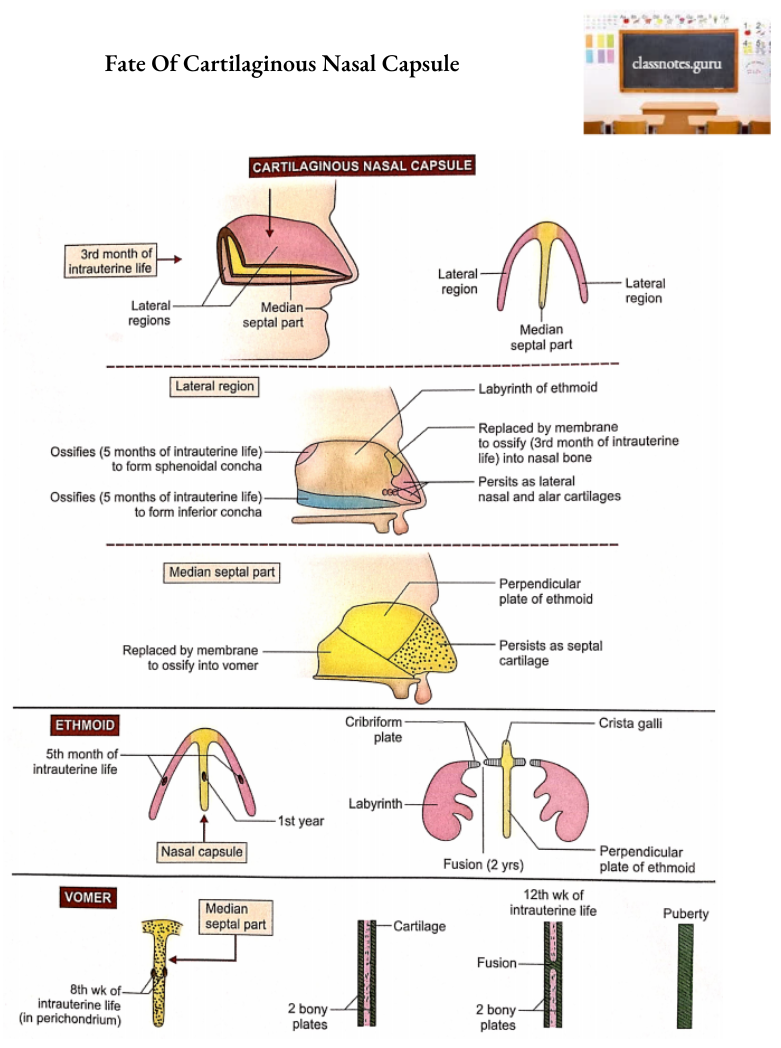Ossification At A Glance
Ossification At A Glance Definition
Ossification is defined as the deposition of calcium salts in the membranous or cartilaginous background of a bone. The former is called intramembranous, while the latter endochondral ossification.
Ossification At A Glance Centre Of Ossification
The site in the developing bone where calcium salts start depositing is called the centre of ossification. The centre of ossification is first microscopic but soon becomes macroscopic.
Ossification At A Glance Examples
- Bones ossifying in the membrane are most of the mandible, the upper part of the squamous part of the occipital bone, the frontal bone, parietal bones, and squamous and tympanic parts of temporal bones.
- Upper parts of greater wings and pterygoid processes of sphenoid; palatine, lacrimal and zygomatic bones; maxillae, vomer and nasal bones. The rest of the bones in the body are endochondral in origin.
Primary And Secondary Centres
- Though many bones (For example. lacrimal, nasal, zygomatic bones; inferior nasal conchae and auditory ossicles) ossify from a single centre, the majority of them ossify from several foci.
- One centre in these bones appears first in late embryonic and early foetal life (7th week to the primary centre of ossification.
- Remaining 4th month of intrauterine life). These are called centres, called secondary centres appear later during the period from birth to 12 years.
Fusion Of Ossification Centres
- The secondary centres fuse with each other and then with the bone derived from the primary centre.
- The process of fusion begins as early as 3 months of intrauterine life (Example. fusion between 4 centres of squamous part of occipital bone) or may be observed as late as 40 years of age (Example. fusion between body and xiphoid process of sternum).
Fusion Between Adjacent Bones
Some adjacent bones may fuse to develop continuity, for Example. basilar parts of both sphenoid and occipital bones fuse at the age of 25 years.
Ossification At A Glance Clinical Significance
Xiphoid process fuses with the body of the sternum at the age of 40 years, therefore, enhancing the scope of age determination at a later age.
Cartilaginous Nasal Capsule
- It is the cartilage which forms medial and lateral walls as well as the roof of the nasal cavity. It plays an important role in the development of the nasal framework.
- Structures derived from this capsule are sphenoidal conchae, ethmoidal bone, inferior nasal conchae, vomer, nasal bones and septal, lateral nasal and alar cartilages.
- Nasal bones and vomer develop in the membrane while the rest of the above bones are endochondral in origin.
Appearance And Fusion Of Ossification Centres
The times of appearance of the ossification centre (in case of single focus) or appearance, as well as a fusion of primary and secondary centres (in case of multiple foci), are represented diagrammatically.




